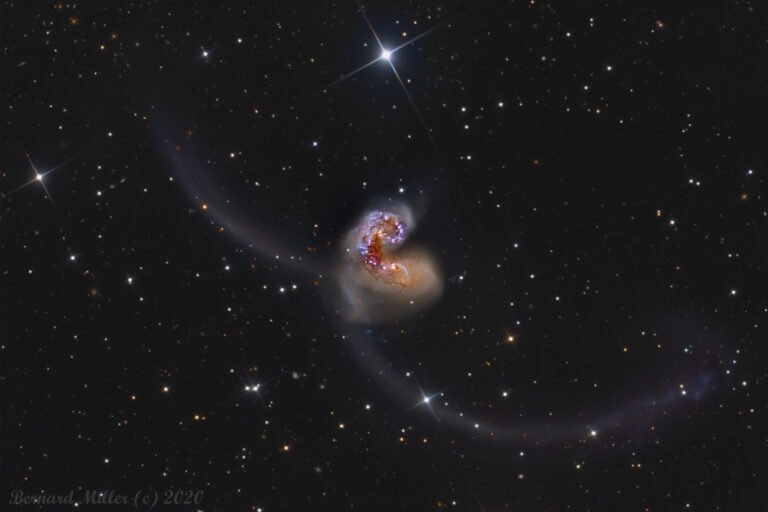心形的触须星系
2024年2月7日 The Heart Shaped Antennae Galaxies Image Credit & Copyright: Kent E. Biggs Explanation: Are these two galaxies really attracted to each other? Yes, gravitationally, and the result appears as an enormous iconic heart — at least for now. Pictured is the pair of galaxies cataloged as NGC 4038 and NGC 4039,known as the Antennae Galaxies. Because they are only 60 million light years away, close by intergalactic standards, the pair is one of the best studied interacting galaxies on the night sky. Their strong attraction began about a billion years ago when they passed unusually close to each other. As the two galaxies interact, their stars rarely collide, but new stars are formed when their interstellar gases crash together. Some new stars have already…




